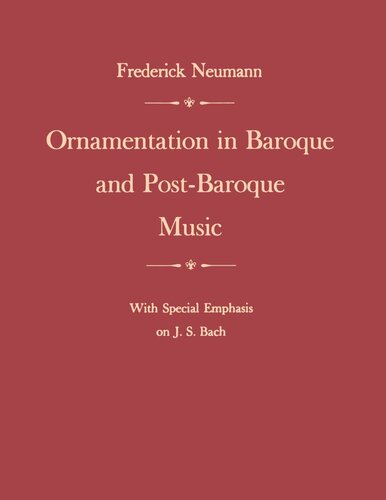

Most ebook files are in PDF format, so you can easily read them using various software such as Foxit Reader or directly on the Google Chrome browser.
Some ebook files are released by publishers in other formats such as .awz, .mobi, .epub, .fb2, etc. You may need to install specific software to read these formats on mobile/PC, such as Calibre.
Please read the tutorial at this link: https://ebookbell.com/faq
We offer FREE conversion to the popular formats you request; however, this may take some time. Therefore, right after payment, please email us, and we will try to provide the service as quickly as possible.
For some exceptional file formats or broken links (if any), please refrain from opening any disputes. Instead, email us first, and we will try to assist within a maximum of 6 hours.
EbookBell Team

4.3
68 reviewsOrnaments play an enormous role in the music of the seventeenth and eighteenth centuries, and ambiguities in their notation (as well as their frequent omission in the score) have left doubt as to how composers intended them to be interpreted. Frederick Neumann, himself a violinist and conductor, questions the validity of the rigid principles applied to their performance. In this controversial work, available for the first time in paperback, he argues that strict constraints are inconsistent with the freedom enjoyed by musicians of the period.
The author takes an entirely new look at ornamentation, and particularly that of J. S. Bach. He draws on extensive research in England, France, Germany, Italy, and the United States to show that prevailing interpretations are based on inadequate evidence. These restrictive interpretations have been far-reaching in their effect on style. By questioning them, this work continues to stimulate a reorientation in our understandiing of Baroque and post-Baroque music.